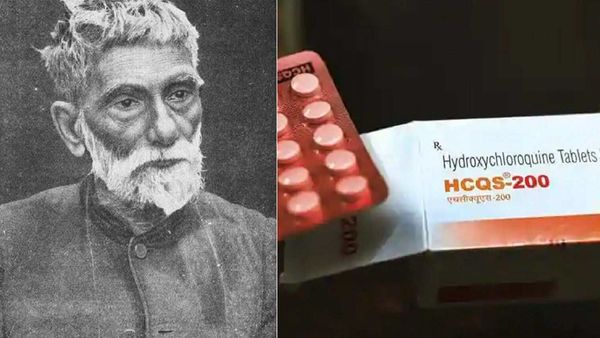Bengal Chemicals and Pharmaceuticals
Government P.C. College
Government P.C. College
Hydroxychloroquine
Demand for hydroxychloroquine has increased significantly in the world recently as an antidote to Covid-19. In that context, the news has again taken the title of Acharya Prafulla Chandra Roy, the inventor of the cultivation of cinchona in north Bengal and the inventor of time-consuming herbs.The main ingredient in malaria, the hydroxychloroquine, whose synthesized version is known as quinine, is the bark of the cinchona tree. Cinchona is cultivated on an area of about 1.5 acres in the hill town of Mongpu and its adjoining areas of Darjeeling district of North Bengal. There were also three quinine factories once operating, though they have been closed for several years.
PC Roy was born on August 2, 1861, in Raduli village of Pikegacha upazila in Khulna district of Bangladesh. He was the son of Bhubanmohani Devi and Harishchandra Roy.Harishchandra Roy was a local landlord.His education began at the established ME school. He was admitted to the hair school in Calcutta in the year 1872, but his studies were disrupted due to diseases of the blood vessel. He was forced to return to his hometown.This time of being in the village helped make a significant difference in her life. He got a lot of books in his father's library and the bookshop helped him to develop his knowledge.In the year 1874, Prafulla Chandra returned to Calcutta and attended Albert School. From this school he passed the first division in all the finals and entrance examinations in the year AD. He then joined the Metropolitan College (now Vidyasagar College) founded by Ishwar Chandra Vidyasagar. From there, he passed the BA class at Presidency College, passing the second section of the college final and FA examination (Intermediate or HSC).With a Gilchrist scholarship from the Presidency, he went to Edinburgh University in Scotland to study. He passed his B.Sc.Young P.C.Roy Subsently he began his studies at the University of Edinburgh to obtain a DSc degree. The subject of that study was the observation of the coupling of copper magnesium.After two years of rigorous pursuit, he completed his studies and obtained a PhD and D.Sc degree. He was even awarded the Hope Prize for being the best nominee for this dissertation.In 1888s, Prafulla Chandra Roy returned to different countries of Europe. He started his career by joining the Presidency College as an assistant professor.He taught at this college for almost 24 years. During his teaching, he continued his many new studies on chemistry, his favorite subject.Under his initiative .
In the year 1892 Prafulla Chandra established Bengal Chemicals in a laboratory with a capital of just rs.700, keeping in mind the young entrepreneurs of Bengal.At the session of the Indian Medical Congress in Calcutta in 1893, he arranged for the display of various herbal products prepared by the company.By 1908, Bengal's chemicals and pharmaceuticals were responding to the industry, which was praised by famed publicist John Cummings.Under the leadership of Acharya Prafulla Chandra, the business of the organization continued to grow. Bengal Chemicals was also established in Maniktala in Kolkata in 1905 and in Mumbai in the north suburban in 1920, and in Mumbai in1938.
Acharya Prafulla Chandra transformed Bengal Chemicals into a large-scale Bengal Chemicals and Pharmaceuticals Works Private Limited by investing r.s. 2 lakh in 1901.
Under the leadership of Acharya Prafulla Chandra, the business of the organization continued to grow. Bengal Chemicals was also established in Maniktala in Kolkata in 1905 and in Mumbai in the north suburban in 1920, and in Mumbai in1938.
In the year 1895, he discovered mercurus nitrite (HgNO2), which caused a global stir. This is one of his major discoveries. He discovered a total of 12 compounds of salt and 3 thioesters throughout his life.
in 1903nscientist PC Roy established the RKB Harishchandra School under the name of father.He established a college called PC College in Bagerhat district. Which is playing a huge role in spreading education in Bangladesh today.
www.microzenith.com

Comments
Post a Comment